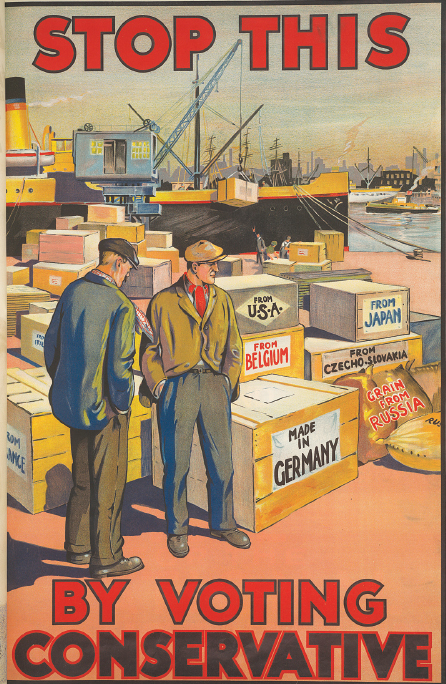Understanding World Societies:
Printed Page 919
Chapter Chronology
The European Response to the Depression
The American stock market’s collapse in October 1929 set off a chain of economic downturns that hit Europe, particularly Germany and Great Britain, the hardest. Postwar Europe had emerged from the Great War deeply in debt and in desperate need of investment capital to rebuild. The United States became the primary creditor and financier. Germany borrowed, for example, to pay Britain war reparations, and then Britain took that money and repaid its war debts and investment loans to America. When the American economy crashed, the whole circular system crashed with it.
Of all the Western democracies, the Scandinavian countries under socialist leadership responded most successfully to the challenge of the Great Depression. When the economic crisis struck in 1929, Sweden’s socialist government pioneered the use of large-scale deficits to finance public works projects and thereby maintain production and employment. Scandinavian governments also increased social welfare benefits. All this spending required a large bureaucracy and high taxes. Yet both private and cooperative enterprise thrived, as did democracy. Some observers considered Scandinavia’s welfare socialism an appealing middle way between what they considered to be sick capitalism and cruel communism or fascism.

British Conservative Party Poster, 1931
This campaign poster from the 1931 British general election portrays crates and bags of goods being unloaded on English docks. (Photo by The Conservative Party Archive/Getty Images)> PICTURING THE PASTANALYZING THE IMAGE: Where are the goods on the dock from? What do the Conservatives want stopped?CONNECTIONS: Was this attitude toward foreign goods unique to England? What other countries held similar views? What effect did such attitudes have on the worldwide depression?
In Britain, Ramsay MacDonald’s Labour government (1929–1931) and, after 1931, the Conservative-dominated coalition government followed orthodox economic theory. The budget was balanced, but unemployed workers received barely enough welfare support to live. Nevertheless, the economy recovered considerably after 1932, reflecting the gradual reorientation of the British economy. Britain concentrated increasingly on the national, rather than the international, market. Old export industries, such as textiles and coal, continued to decline, but new industries, such as automobiles and electrical appliances, grew. These developments encouraged British isolationism and often had devastating economic consequences for Britain’s far-flung colonies and dominions, which depended heavily upon reciprocal trade with Great Britain and the United States.
The Great Depression came late to France as it was relatively less industrialized and more isolated from the world economy. But once the depression hit, it stayed. Economic stagnation both reflected and heightened an ongoing political crisis, as liberals, democratic socialists, and Communists fought for control of the French government with conservatives and the far right. The latter groups agitated against parliamentary democracy and turned to Mussolini’s Italy and Hitler’s Germany for inspiration. At the same time, the Communist Party and many workers looked to Stalin’s Russia for guidance.
Frightened by the growing popularity of Hitler-and Mussolini-style right-wing dictatorships at home and abroad, the Communist, Socialist, and Radical Parties in France formed an alliance — the Popular Front — for the May 1936 national elections. Following its clear victory, the Popular Front government launched a far-reaching program of social and economic reform. Popular with workers and the lower middle class, these measures were quickly sabotaged by rapid inflation, rising wages, a decline in overseas exports, and cries of socialist revolution from frightened conservatives. Politically, the Popular Front lost many left-wing supporters when it failed to back the republican cause in the Spanish Civil War, while Hitler and Mussolini openly armed and supported Franco’s nationalists (see “Aggression and Appeasement, 1933-1939”). In June 1937, with the country hopelessly divided, the Popular Front collapsed.
